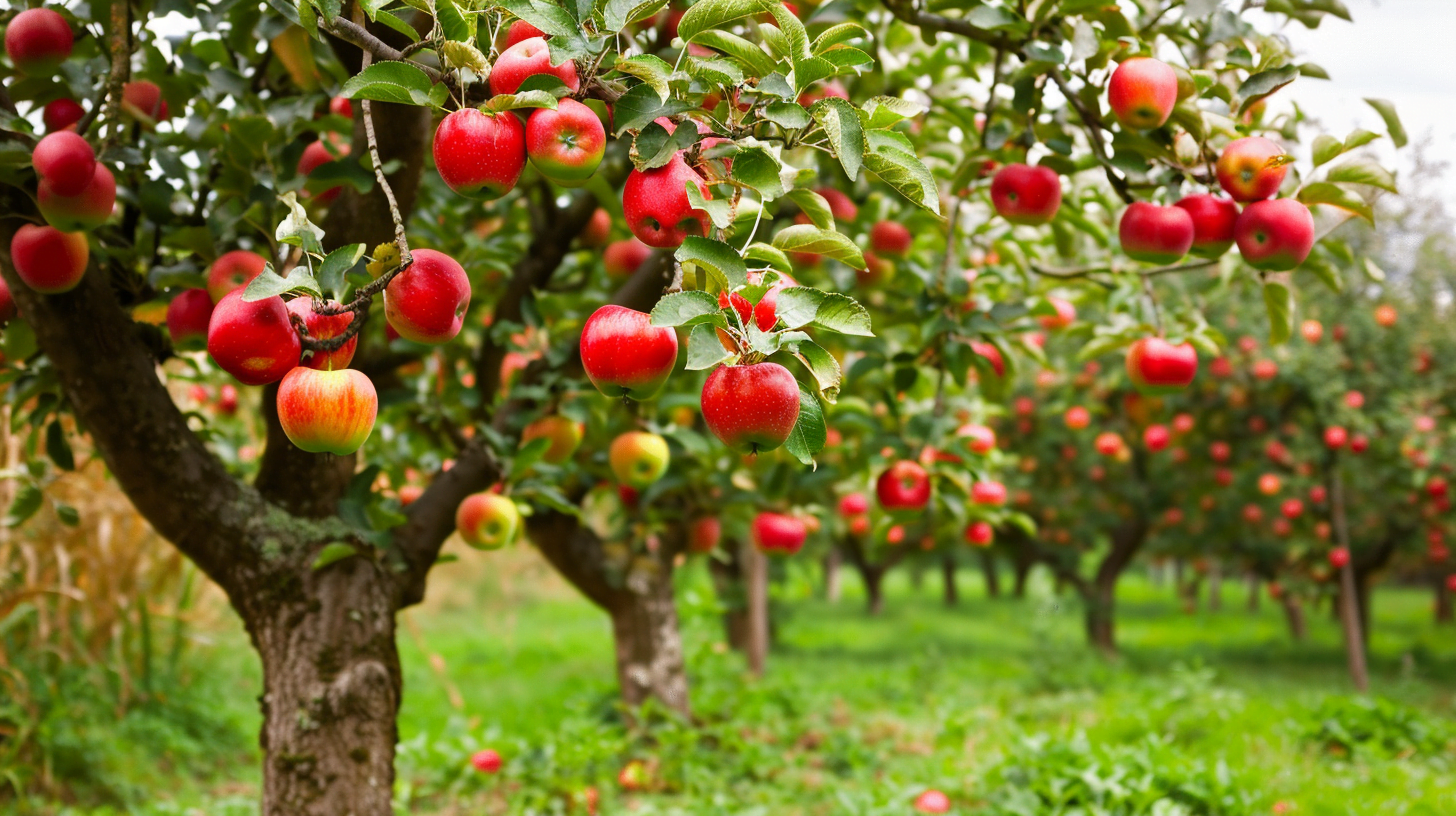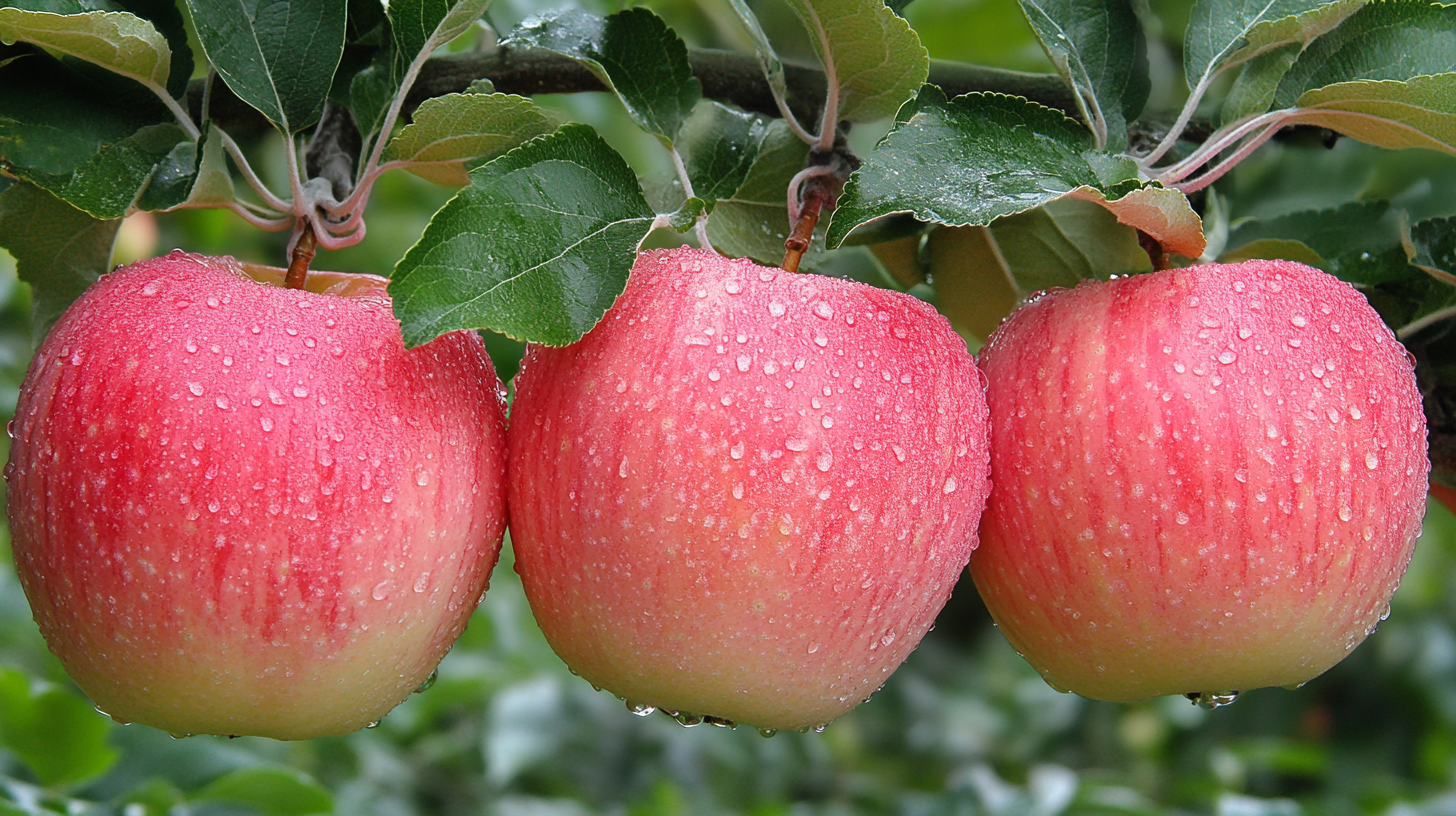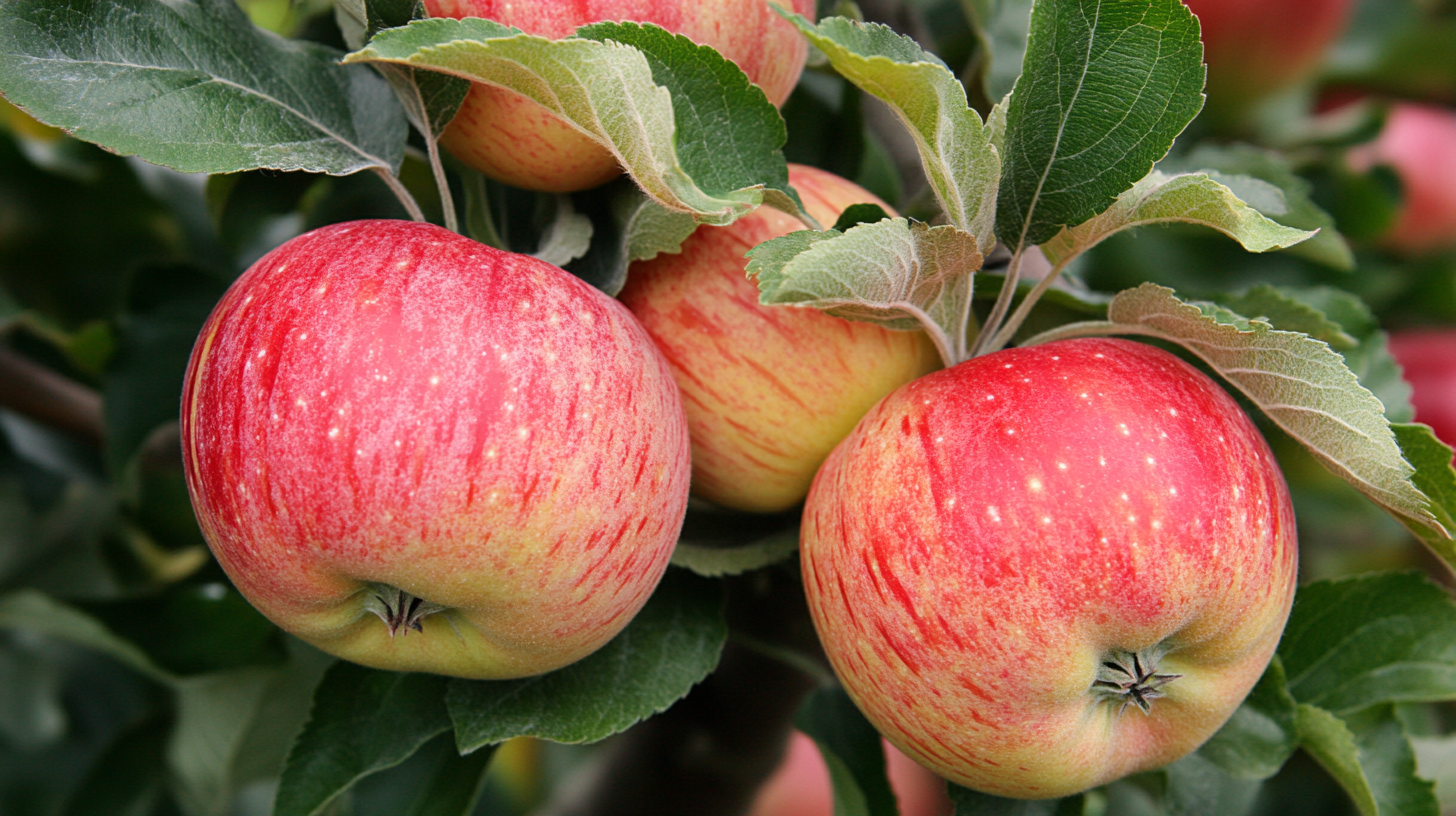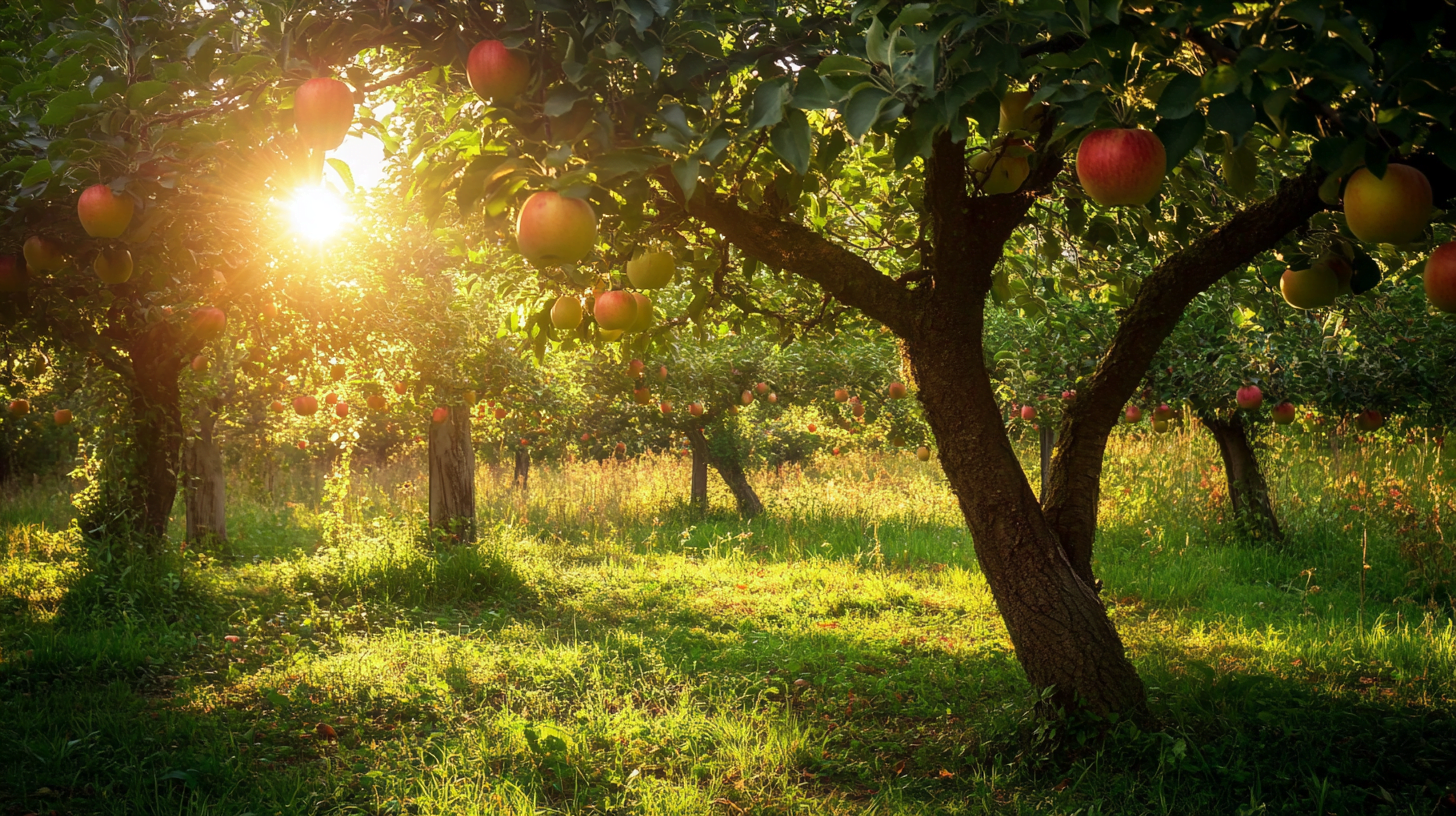Beautiful Plants For Your Interior

Table of Contents
Introduction
Imagine biting into a crisp, homegrown apple. Planting apple trees in the fall can make this dream a reality. This article will explore the benefits, considerations, and steps for planting apple trees in the fall, ensuring a fruitful harvest in the years to come.
Why Plant Apple Trees in the Fall?
Benefits of Fall Planting
Optimal Soil Conditions
In the fall, soil temperatures are still warm from the summer, which helps roots establish more quickly. Additionally, the soil retains moisture better, reducing the need for frequent watering.
Root Establishment
Planting in the fall allows apple trees to establish their root systems before the winter. This head start means that when spring arrives, the trees can focus on growing and producing fruit rather than just surviving.
Reduced Stress on Trees
Cooler temperatures and increased rainfall in the fall reduce the stress on newly planted trees. This environment is less harsh compared to the hot, dry conditions of summer.
Availability of Nursery Stock
Nurseries often have a better selection of apple tree varieties in the fall. This is because they are clearing out stock before winter, giving you more options to choose from.
Choosing the Right Apple Tree Variety
Climate Considerations
Cold-Hardy Varieties
Selecting cold-hardy apple varieties is crucial if you live in a region with harsh winters. Varieties like Honeycrisp, Northern Spy, and Haralson are excellent choices for colder climates.
Disease-Resistant Varieties
Choosing disease-resistant varieties can save you a lot of trouble down the road. Varieties like Liberty, Enterprise, and GoldRush are known for their resistance to common apple diseases like apple scab and fire blight.
Pollination Requirements
Self-Pollinating vs. Cross-Pollinating
Most apple trees require cross-pollination to produce fruit. This means you need at least two different varieties that bloom at the same time. However, some varieties like Golden Delicious are partially self-pollinating but still benefit from having a pollinator nearby.
Planting Multiple Trees
Planting more than one tree increases the chances of successful pollination. Ensure that the varieties you choose are compatible and bloom simultaneously.
Preparing the Planting Site
Soil Preparation
Soil Testing
Testing your soil’s pH and nutrient levels is essential before planting. Apple trees prefer slightly acidic soil with a pH between 6.0 and 7.0. You can use a DIY soil test kit or send a sample to a local extension service.
Amending the Soil
If your soil is not ideal, you can amend it with organic matter like compost or well-rotted manure. This improves soil structure, drainage, and nutrient content.
Site Selection
Sunlight Requirements
Apple trees need full sun to thrive, which means at least six hours of direct sunlight per day. Choose a location that receives ample sunlight throughout the day.
Spacing and Air Circulation
Proper spacing is crucial to prevent disease and ensure healthy growth. Space standard apple trees about 20 feet apart, semi-dwarf trees 12-15 feet apart, and dwarf trees 8-10 feet apart.
Protection from Wind
Young apple trees are vulnerable to strong winds. Planting them near a windbreak, such as a fence or a row of shrubs, can provide necessary protection.
Planting Apple Trees in the Fall
Timing
Best Time to Plant
The ideal time to plant apple trees in the fall is after the leaves have dropped but before the ground freezes. This usually falls between late September and early November, depending on your hardiness zone.
Planting Steps
Digging the Hole
Dig a hole that is twice as wide and just as deep as the tree’s root ball. This gives the roots plenty of room to spread out.
Placing the Tree
Place the tree in the hole, ensuring that the graft union (the bulge where the tree was grafted onto the rootstock) is about 2 inches above the soil line. This prevents the tree from reverting to the rootstock variety.
Backfilling and Watering
Backfill the hole with the soil you removed, gently tamping it down to eliminate air pockets. Water the tree thoroughly to help settle the soil.
Mulching
Apply a thick layer of mulch around the base of the tree, but keep it a few inches away from the trunk. Mulch helps retain moisture and suppress weeds.
Caring for Newly Planted Apple Trees
Watering
Initial Watering Needs
Newly planted apple trees need consistent moisture. Water them deeply once or twice a week, depending on rainfall and soil conditions.
Winter Watering Tips
As temperatures drop, reduce the frequency of watering. However, ensure the soil remains slightly moist to prevent the roots from drying out.
Fertilizing
When to Fertilize
Do not fertilize immediately after planting. Wait until early spring to apply a balanced fertilizer, which will support new growth.
Pruning and Training
Initial Pruning
Prune the tree at planting to remove any damaged or crossing branches. This helps the tree focus its energy on establishing roots.
Training for Shape
Train the tree to develop a strong central leader and well-spaced scaffold branches. This structure supports healthy growth and fruit production.
Protecting from Pests and Diseases
Common Pests and Diseases
Apple trees are susceptible to pests like aphids, codling moths, and diseases like apple scab and fire blight. Regular monitoring and early intervention are key to managing these issues.
Organic and Chemical Treatments
Use organic treatments like neem oil or insecticidal soap for pest control. For diseases, copper-based fungicides can be effective. Always follow label instructions and consider integrated pest management practices.

Long-Term Care and Maintenance
Seasonal Care
Spring and Summer Care
In spring, apply a balanced fertilizer and prune the tree to maintain its shape. During summer, ensure the tree receives adequate water and monitor for pests and diseases.
Fall and Winter Care
In fall, apply a layer of mulch to protect the roots from freezing temperatures. Prune the tree after it has finished fruiting to remove any dead or diseased wood.
Harvesting Apples
When to Harvest
Apples are ready to harvest when they easily come off the tree with a gentle twist. The exact timing depends on the variety, but it typically falls between late summer and early fall.
Proper Harvesting Techniques
Use a gentle twisting motion to remove apples from the tree. Avoid pulling or yanking, as this can damage the fruit and the tree.
Conclusion
Planting apple trees in the fall offers numerous benefits, from optimal soil conditions to reduced stress on the trees. By following the steps outlined in this guide, you can ensure your apple trees thrive and produce bountiful harvests for years to come. So, why wait? Start your apple tree planting journey this fall and enjoy the fruits of your labor in the seasons ahead.


